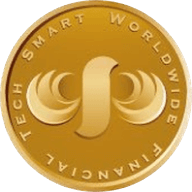Band Protocol (BAND) ajută blockchain-urile și proiectele să obțină acces la date din lumea reală prin intermediul oracolelor cross-chain. Ecosistemul suportă contracte inteligente și interfețe de programare a aplicațiilor (API-uri), permițând utilizatorilor să conecteze inovațiile on-chain cu informațiile off-chain într-un mod descentralizat și fără server.
Ce este Band Protocol
Band Protocol este o soluție Oracle descentralizată concepută pentru a elimina depozitele de date centralizate. Funcționează ca o soluție de nivel 2 pe chain-ul Cosmos (ATOM), furnizând date off-chain sigure către aplicațiile descentralizate (dApp-uri) on-chain.
Lansat inițial pe Ethereum în 2019, Band Protocol a trecut la chain-ul Cosmos în 2020, folosind kitul de dezvoltare software Cosmos pentru a alimenta chain-ul său nativ, BandChain.
Echipa Band Protocol
Echipa Band Protocol este condusă de Soravis Srinawakoon, care servește ca CEO în funcțiune. Printre alți membri cheie ai echipei se numără și Paul Nattapatsiri ca CPO, Sorawit Suriyakarn ca CTO și co-fondator, Sirada Lorhpipat ca responsabil pe partea de dezvoltare a afacerilor și Satawat Thitisupakul ca inginer software.
Cum funcționează Band Protocol
Ecosistemul Band Protocol constă în doi participanți principali: furnizorii de date și validatorii. Furnizorii de date colectează datele oracolului din surse on-chain de încredere și le furnizează protocolului. Validatorii joacă un rol crucial prin verificarea autenticității datelor și introducerea lor în contractele inteligente relevante pentru utilizare. Similar cu alte proiecte precum Theta Network (THETA), Band Protocol se mândrește cu un sistem dual-token compus din BAND și tokeni Dataset.
Tokenul nativ al Band Protocol: BAND
BAND este tokenul nativ al ecosistemului Band Protocol. Tokenii pot fi delegați validatorilor rețelei, guvernanței și stakingului.
Aprovizionarea totală de tokeni BAND este limitată la 100 de milioane. Economia tokenilor BAND urmează un model inflaționist, care poate fi atribuit emiterii de noi tokeni pentru a stimula și recompensa furnizorii de date și validatorii din ecosistemul Band Protocol.
Cum să mizați BAND?
Pentru a miza BAND pe rețeaua principală BandChain, există două opțiuni disponibile: puteți deveni un validator prin rularea unui nod și participarea activă în rețea sau puteți alege să deveniți un delegator și să delegați tokenii dvs. BAND unui validator la alegere. Indiferent de metoda de staking pe care o selectați, veți primi tokeni BAND ca recompense pentru contribuția dvs. la ecosistemul Band Protocol.
Alternativ, puteți alege să mizați BAND pe OKX Earn. OKX Earn oferă planuri flexibile de staking BAND pentru un APY estimat la unu. Mizați ușor BAND pe OKX Earn pentru a începe să primiți recompense. BAND poate fi scos de la staking în orice moment.
Cazuri de utilizare ale BAND
Tokenii BAND oferă diverse funcționalități în cadrul ecosistemului Band Protocol. Ei acționează ca garanție pentru a se asigura că furnizorii de date oferă date fiabile rețelei. În plus, tokenii BAND acordă deținătorilor posibilitatea de a participa la guvernanță prin votarea propunerilor. În plus, tokenii BAND contribuie la securitatea rețelei, deoarece deținătorii au opțiunea de a delega tokenii lor validatorilor, asigurând integritatea și stabilitatea rețelei.
Distribuția BAND
Tokenii BAND sunt distribuiți astfel:
- 25 la sută către fundația Band pentru dezvoltarea protocolului
- 20 la sută către vânzările publice
- 23,5 la sută către echipă, cu o perioadă de vesting
- 21,5 la sută ca tokeni de angajare a comunității
- 10 la sută către trezoreria ecosistemului
Starea actuală a Band Protocol
Band Protocol pune un accent puternic pe securitatea rețelei, utilizând Toleranța la defecte bizantine (BFT), delegated Proof of Stake (dPoS) și o rețea robustă de validatori pentru a securiza BandChain. Este recunoscut ca un jucător important în spațiul Oracle, alături de proiecte precum Chainlink (LINK). În plus, Band Protocol a stabilit un parteneriat de colaborare cu Horizen (ZEN) ca parte a inițiativei sale de sursare de date off-chain.

















